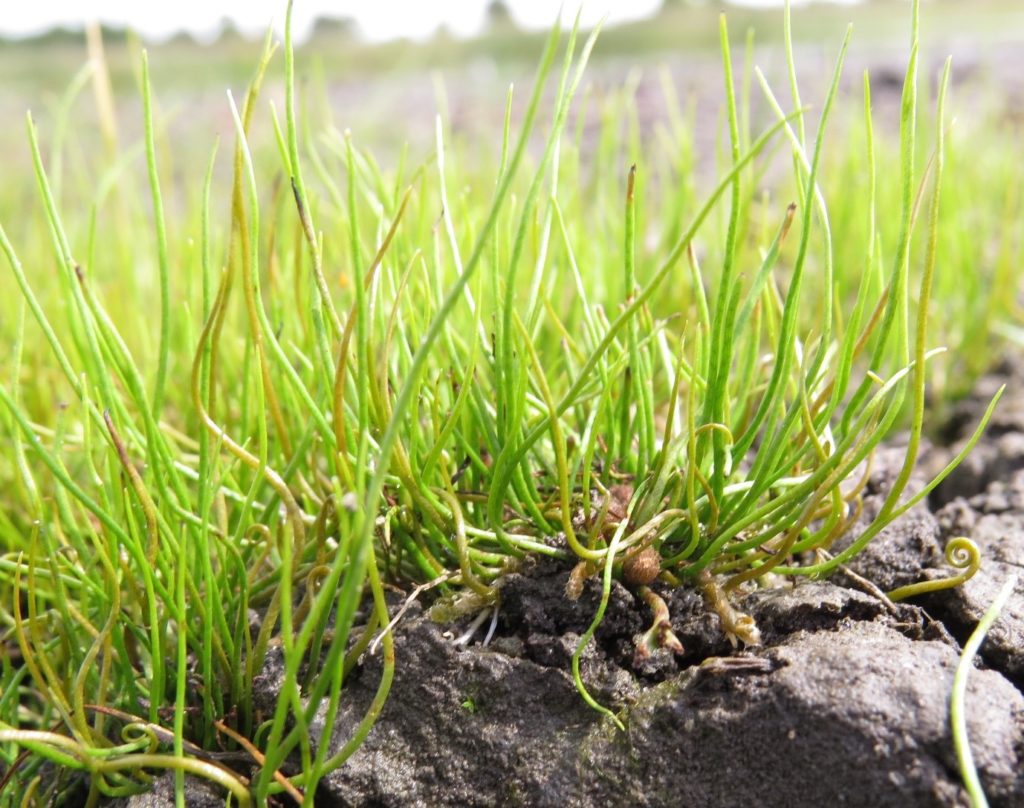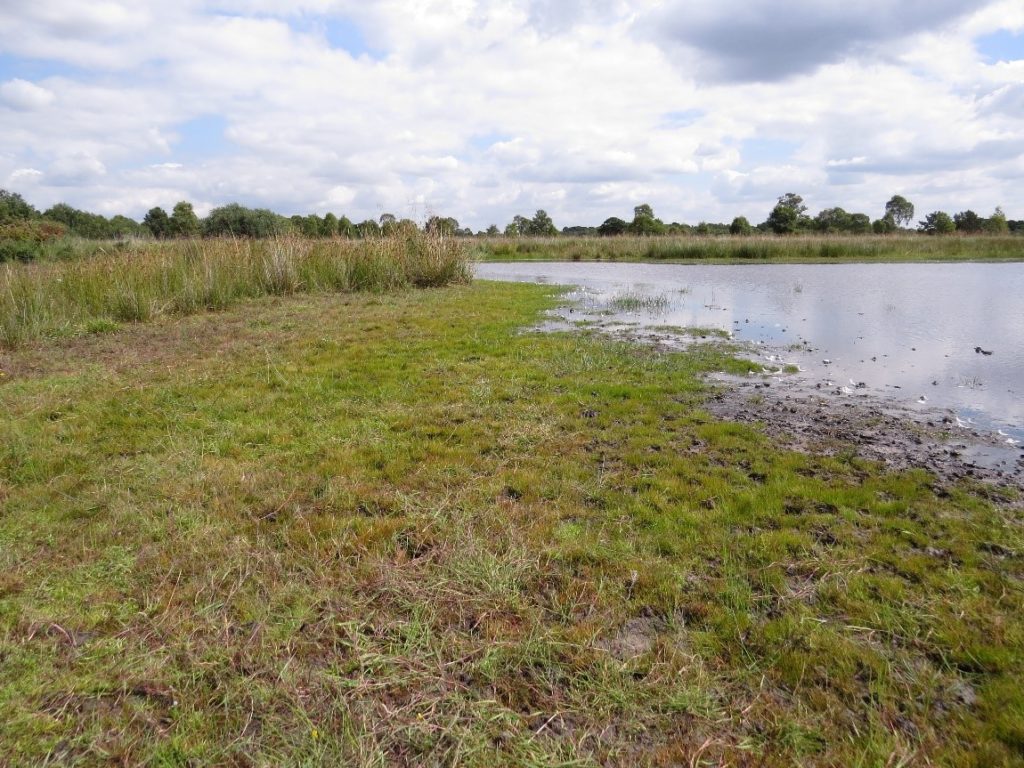Flagship Focus: Strensall Common 2017
28th February 2017
Carrying on with our Flagship Focus series, here’s Anne Heathcote, Project Officer for Northern England, to introduce Strensall Common Flagship Pond site
 The tiny, and rare, aquatic fern Pillwort grows thickly in the margins of a recently created scrape on Strensall Common.
The tiny, and rare, aquatic fern Pillwort grows thickly in the margins of a recently created scrape on Strensall Common.
Close to the City of York, in North Yorkshire, Strensall Common was identified as a Flagship Pond site due to its exceptional importance for freshwater biodiversity. Although the 579 hectare Site of Special Scientific Interest (SSSI), along with fellow Flagship site Skipwith Common, is one of only two extensive areas of open heathland in the Vale of York, it also supports a rich mosaic of habitats including mire, ponds, woodland and acid grassland.
As the majority of the common is owned by the Ministry of Defence, the period of military occupation from the 1880s onwards has helped to create and protect many of the ponds including several excavated in recent years for conservation purposes. However the oldest ponds probably originated as peat cuttings and clay pits. Through the Heritage Lottery funded People, Ponds & Water project, Freshwater Habitats Trust are helping to protect these ponds and the extraordinarily diverse range of species that live within and around them.
Recent surveys have revealed that one of the oldest ponds on the common, Kidney Pond, which certainly existed in the 1890s, falls into the top 20% of the very best ponds in England and Wales. This is an extraordinary pond as only around 5% of the original pond area, as seen in 1890s mapping, exists as a crescent shaped area of open water. The majority of the basin is now occupied by possibly the best and most extensive examples a nationally rare floating fen habitat in lowland England. The remaining open water to the south contains several Nationally Scarce plant and invertebrate species, including Tubular Water-dropwort Oenanthe fistulosa, Marsh Stitchwort Stellaria palustris and Mud Snail Omphiscola glaba. Mud Snail is a rare and declining wetland mollusc. Historically, this species was widespread throughout lowland areas of England and Wales. Although possibly under-recorded, it is thought that this species has undergone a marked decline in the last 50 years and it is now classified as Vulnerable (IUCN).
 The marvellous Kidney Pond, home to rare plants and animals, and possibly the best example of floating fen habitat in lowland England.
The marvellous Kidney Pond, home to rare plants and animals, and possibly the best example of floating fen habitat in lowland England.
Located close to Kidney Pond, the Pillwort Scrape is an open, shallow pool excavated in 2012. This is a shining example of how newly created ponds can quickly become rich aquatic habitats. After just a few years, our recent survey had revealed that there are 118 plant and invert species in and around the pond, including Nationally Scarce Mud snail and Pillwort Pilularia glabulifera. Pillwort is a very distinctive little grass-like plant. It is in fact an aquatic fern with thin, threadlike leaves which unfurl from tight coils as it grows, and has hard spore cases, the pills. In the right conditions it forms a creeping mat over bare mud at the margins of ponds and lakes which can look like a miniature bright green lawn. Pillwort is a Priority Species for conservation in both England and Wales. It is declining rapidly throughout its north-west European range and the UK now holds a substantial proportion of the global population. Finding it naturally colonising this new scrape is fantastic news, and we are hoping that as part of our project we’ll be able to create similar scrapes on the common so the species can expand.
 Within one year, this scrape became home to thick carpets of Pillwort, and Nationally Scarce Mud Snail were numerous.
Within one year, this scrape became home to thick carpets of Pillwort, and Nationally Scarce Mud Snail were numerous.
Both the Mud Snail and Pillwort are typically found in clean, nutrient poor waters. Our PondNet volunteers carried out extensive water quality testing on the common in the spring and the results indicated that the ponds surveyed, including Kidney Pond and Pillwort scrape, had no evidence of nitrate or phosphate pollution. Great news as many animals and plants, especially rare and endangered species, need to live in water that is naturally very low in nutrients.
 Volunteers prepare to collect water samples to test nutrient levels in Strensall Common’s ponds and ditches.
Volunteers prepare to collect water samples to test nutrient levels in Strensall Common’s ponds and ditches.  Collecting a water sample that will be tested using a Clean Water for Wildlife test kit.
Collecting a water sample that will be tested using a Clean Water for Wildlife test kit.
All the information collected, as part of the Flagship Ponds Project, helps the site managers better understand the wildlife, and allows well-informed decisions to be made on the future management of the ponds on the common. With the help of our volunteers and supporters we’ll hopefully be able to protect Strensall Common’s amazing aquatic plants and creatures for the future.
Want to find out more?
- Read more about the Flagship Ponds Project
- Help us raise funds to carry out vital habitat management at Flagship Pond sites across the country
- Learn more about the Clean Water for Wildlife Survey, and how groups can take part
